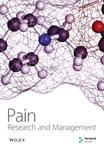The Role of Infant Pain Behaviour in Predicting Parent Pain Ratings
Abstract
BACKGROUND: Research investigating how observers empathize or form estimations of an individual experiencing pain suggests that both characteristics of the observer (‘top down’) and characteristics of the individual in pain (‘bottom up’) are influential. However, experts have opined that infant behaviour should serve as a crucial determinant of infant pain judgment due to their inability to self-report.
OBJECTIVE: To predict parents’ immunization pain ratings using archival data. It was hypothesized that infant behaviour (‘bottom up’) and parental emotional availability (‘top down’) would directly predict the most variance in parent pain ratings.
METHODS: Healthy infants were naturalistically observed during their two-, four-, six- and/or 12-month immunization appointments. Cross-sectional latent growth curve models in a structural equation model context were conducted at each age (n=469 to n=579) to examine direct and indirect predictors of parental ratings of their infant’s pain.
RESULTS: At each age, each model suggested that moderate amounts of variance in parent pain report were accounted for by models that included infant pain behaviours (R2=0.18 to 0.36). Moreover, notable differences were found for older versus younger infants with regard to parental emotional availability, infant sex, caregiver age and amount of variance explained by infant variables.
CONCLUSIONS: The results of the present study suggest that parent pain ratings are not predominantly predicted by infant behaviours, especially before four months of age. Current results suggest that recognizing infant pain behaviours during painful events may be an important area of parent education, especially for parents of very young infants. Further work is needed to determine other factors that predict parent judgments of infant pain.




